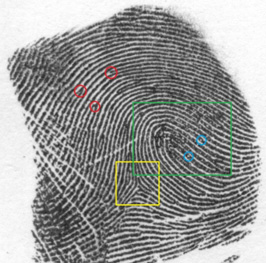Error Rates for Latent Fingerprinting as a Function of Visual Complexity and Cognitive Difficulty
Jennifer Mnookin, Philip J. Kellman, Itiel Dror,Gennady Erlikhman, Patrick Garrigan, Tandra Ghose, Everett Metler, Dave Charlton
See also the instructional videos on "Fingerprint Comparison"
Abstract
 |
Read the report
Receive our free monthly newsletter and/or job posting alerts Click to sign up

